Introduction
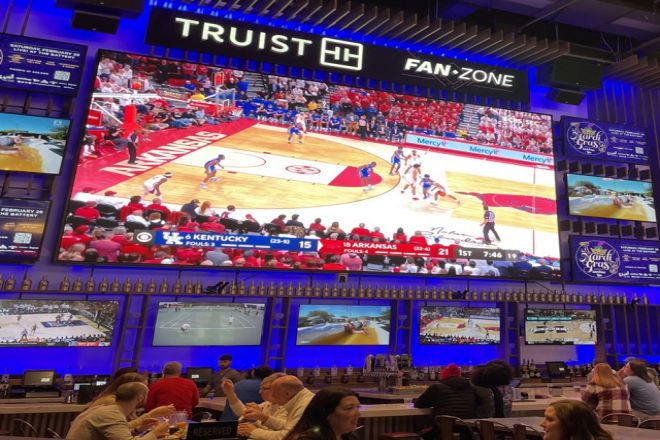
Les retransmissions en direct sont devenues un élément indispensable de la vie moderne. Qu'il s'agisse de suivre les moments passionnants d'événements sportifs ou de s'immerger dans le monde artistique des performances littéraires et artistiques, le contenu diffusé en direct peut toujours nous donner l'impression d'y être.
Mais avez-vous déjà pensé à regarder ces émissions en direct d'une manière plus choquante et plus vivante ? Écran d'affichage LED est la clé pour ouvrir la porte à un nouveau monde. Cet article vous fera directement apprécier le charme unique des écrans d'affichage LED dans la diffusion de contenu en direct et vous expliquera comment améliorer l'expérience de visionnage grâce aux écrans d'affichage LED et profiter d'un festin visuel sans précédent.
Aucun réglage complexe n’est nécessaire ; suivez simplement nos conseils et vous pourrez facilement accéder à un nouveau domaine de visualisation en direct !
1. Quelles sont les exigences de qualité pour les écrans d’affichage LED pour la diffusion en direct synchrone ?
Les exigences de qualité pour les écrans d'affichage LED destinés à la diffusion synchrone en direct comprennent principalement les aspects suivants :
1). Utilisez un lecteur synchronisé
C'est le point le plus important. Si vous souhaitez utiliser votre écran LED pour diffuser un match de football en direct, vous devez utiliser un lecteur synchronisé. La diffusion asynchrone ne peut pas être effectuée.
2). Haut résolution
La haute résolution peut présenter des images et des textes plus délicats et plus clairs, ce qui est essentiel pour l'affichage des détails du contenu en direct.
Surtout lorsqu'il est nécessaire d'afficher des détails de produit, des expressions d'ancrage ou des scènes sportives, la haute résolution peut garantir au public une excellente expérience visuelle.
En règle générale, la résolution doit être d'au moins 2K, et même des écrans d'affichage de résolution 4K ou supérieure peuvent être envisagés. Cela permettra non seulement d'afficher clairement le contenu en direct, mais également de garantir la clarté et la finesse de l'image.
3). Haut luminosité et le contraste
- Luminosité:
La luminosité de l'écran LED doit être déterminée en fonction de l'environnement d'installation. Pour les environnements intérieurs, une luminosité de 600 à 800 cd/m² est plus appropriée ; dans les environnements extérieurs, elle doit atteindre 1 500 à 3 000 cd/m² pour garantir que l'image reste clairement visible sous une forte lumière.
La luminosité élevée permet de surmonter les interférences de la lumière ambiante et de maintenir la clarté et la reproduction des couleurs de l'image.
- Contraste:
Le contraste fait référence au rapport entre la zone la plus claire et la zone la plus sombre lors de l'affichage d'une image. Un contraste élevé peut améliorer la superposition et la sensation tridimensionnelle de l'image, rendant l'image plus lumineuse et les couleurs plus vives.
En règle générale, plus le contraste est élevé, mieux c'est, mais l'influence globale d'autres paramètres doit également être prise en compte dans la sélection réelle.
4). Large angle de vue
Un grand angle de vision permet aux spectateurs de voir des images claires et cohérentes dans différentes positions, évitant ainsi les écarts de couleur et de luminosité. Ceci est particulièrement important pour les grandes salles de diffusion en direct ou les événements avec un grand nombre de spectateurs.
En règle générale, les écrans d'affichage LED doivent avoir un grand angle de vision (par exemple, des angles de vision horizontaux et verticaux de plus de 160°) pour garantir que les spectateurs puissent bénéficier d'une bonne expérience de visionnage sous tous les angles.
5). Haut fréquence de rafraîchissement
Un taux de rafraîchissement élevé peut réduire le scintillement et le maculage de l'image, ce qui rend l'image dynamique plus fluide. Ceci est particulièrement important pour montrer des scènes en mouvement rapide ou des démonstrations de produits.
D'une manière générale, le taux de rafraîchissement des écrans d'affichage LED doit atteindre ou dépasser 120 Hz, voire plus (comme 144 Hz, 165 Hz, etc.) pour garantir que le public puisse ressentir la continuité et la fluidité de l'image lorsqu'il regarde la diffusion en direct.
6). Stabilité et fiabilité
La diffusion en direct synchrone nécessite que les écrans d'affichage LED aient une stabilité et une fiabilité élevées pour éviter les pannes ou les interruptions pendant la diffusion en direct.
Choisissez des marques et des produits de qualité fiable et de bonne stabilité pour réduire la fréquence des pannes et des réparations. Dans le même temps, une attention particulière doit être accordée au traitement des détails lors de l'installation et du débogage pour garantir que la connexion de l'équipement est stable et fiable et que la dissipation de la chaleur est bonne.
2. Comment connecter l'écran d'affichage LED à la diffusion en direct via un ordinateur ?
Pour connecter l'écran d'affichage LED à la diffusion en direct et obtenir un contrôle synchrone via ordinateur, vous pouvez principalement suivre les étapes suivantes :
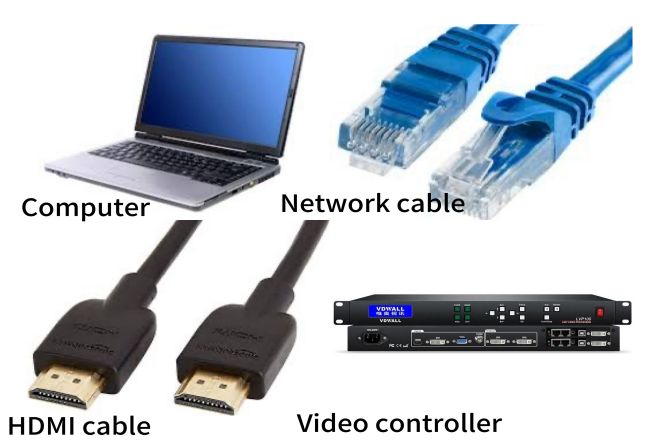
1). Préparation
1.1). Sélection du matériel :
Choisissez un écran d'affichage LED adapté pour vous assurer que sa résolution, sa luminosité, son contraste et d'autres paramètres répondent aux exigences de la diffusion en direct.
Préparez un ordinateur avec des performances stables comme centre de lecture et de contrôle du contenu de diffusion en direct.
Selon le type d'interface de l'ordinateur et de l'écran d'affichage LED, préparez les câbles de connexion correspondants, tels que le câble HDMI et le câble réseau.
1.2). Disposition de l'environnement :
Assurez-vous que l'écran d'affichage LED est installé fermement et à un angle de vision et une hauteur appropriés.
Vérifiez la lumière, la température et les autres conditions de l’environnement de visualisation pour vous assurer que le public peut regarder confortablement le contenu de la diffusion en direct.
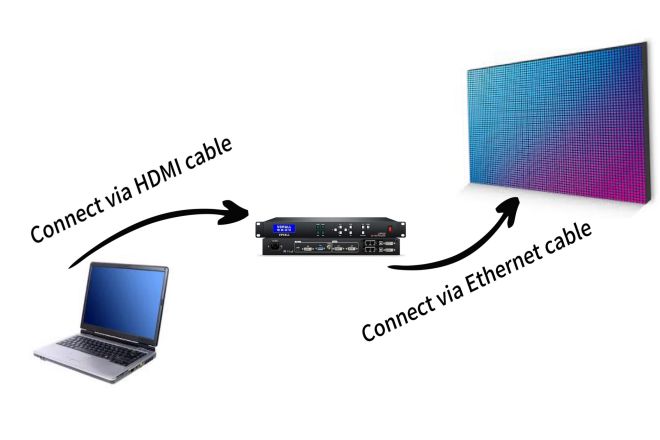
2). Connexion de l'équipement
- La connexion du processeur vidéo depuis l'ordinateur utilise une connexion HDMI :
Si l'ordinateur et l'écran LED prennent en charge l'interface HDMI, le câble HDMI est préférable pour la connexion.
Branchez une extrémité du câble HDMI sur l’interface de sortie HDMI de l’ordinateur et l’autre extrémité sur l’interface d’entrée HDMI de l’écran d’affichage LED.
Ensuite, démarrez l'ordinateur et l'écran d'affichage LED, puis sélectionnez la source du signal en fonction des invites de l'écran d'affichage (sélectionnez généralement le mode HDMI).
- La connexion du processeur vidéo à l'écran LED s'effectue à l'aide d'un câble réseau :
Pour l'application de l'affichage LED, des câbles Ethernet tels que CAT5e ou CAT6 sont généralement sélectionnés, car ils ont des taux de transmission de données élevés et de bonnes capacités anti-interférences.
Branchez une extrémité du câble réseau sur le port réseau du processeur vidéo et l’autre extrémité sur le port réseau de l’écran LED (ou transférez via un périphérique réseau tel qu’un commutateur).
Assurez-vous que le processeur vidéo et l'écran LED se trouvent dans le même segment de réseau afin qu'ils puissent communiquer entre eux. Cela implique généralement de définir des paramètres réseau tels que l'adresse IP et le masque de sous-réseau.
3). Paramètres
Après avoir connecté l’ordinateur et l’écran LED, étant donné que votre écran LED est un système de contrôle synchrone, votre écran LED affichera ce que l’ordinateur affiche.
À ce stade, il vous suffit d'ouvrir le logiciel de diffusion en direct et de sélectionner la diffusion en direct du match de football auquel vous devez jouer.
4). Tests et optimisation
4.1). Test du système :
Effectuer des tests système avant la diffusion officielle en direct, y compris les tests de lecture vidéo, de sortie audio et de synchronisation des images.
Assurez-vous que tous les appareils fonctionnent correctement et sont compatibles entre eux sans conflit.
4.2). Optimisation et réglage :
Effectuez les ajustements d'optimisation nécessaires en fonction des résultats des tests, tels que le réglage des paramètres du logiciel de lecture, le changement du câble de connexion, etc.
Assurez-vous que l’image est claire et fluide et que le son est clair et sans bruit pendant la diffusion en direct.
3. Précautions à prendre lors de l'utilisation d'écrans d'affichage LED pour la diffusion en direct
Lorsque vous utilisez des écrans d'affichage LED pour la diffusion en direct, vous devez prêter attention aux aspects suivants pour garantir le bon déroulement de la diffusion en direct et une bonne expérience pour le public :
1). Choisissez le bon écran d'affichage LED :
Choisissez un écran d'affichage LED avec une résolution, une luminosité, un contraste et d'autres paramètres appropriés en fonction du contenu de la diffusion en direct et de la distance de visualisation.
Par exemple, pour les diffusions en direct d'événements sportifs, vous devrez peut-être choisir un écran couleur haute définition pour garantir une image claire, tandis que pour les conférences pédagogiques, un écran simple et élégant monochrome ou bicolore peut être plus adapté.
Assurez-vous que la taille et la résolution de l'écran d'affichage LED peuvent répondre aux besoins des diffusions en direct pour éviter les images floues ou déformées.
2). Installez correctement l'écran d'affichage LED :
Fixez l'écran d'affichage LED sur un support stable ou un mur de fond pour garantir qu'il ne tremblera pas ou ne tombera pas pendant la diffusion en direct.
Ajustez l'angle d'inclinaison et la hauteur de l'écran d'affichage afin que le public puisse regarder confortablement le contenu de la diffusion en direct.
3). Assurez un signal stable :
Utilisez des câbles de haute qualité (tels que des câbles HDMI, des fibres optiques, etc.) pour connecter l'écran d'affichage LED au processeur vidéo ou à l'appareil de diffusion en direct.
Vérifiez si le câble de signal est fermement connecté pour éviter toute interruption ou interférence du signal.
4). Débogage des effets d'affichage :
Réglez la luminosité, la couleur, le contraste et d'autres paramètres de l'écran LED pour garantir que l'effet d'affichage de l'image est excellent et non éblouissant.
Vérifiez s’il y a des dommages aux pixels ou des anomalies d’affichage et réparez-les à temps.
4. Application pratique des écrans d'affichage LED pour regarder du contenu diffusé en direct
Les écrans d'affichage à LED ont montré une large applicabilité et une forte expressivité dans l'application pratique de la visualisation de contenu diffusé en direct. Voici une description détaillée de plusieurs scénarios d'application spécifiques :
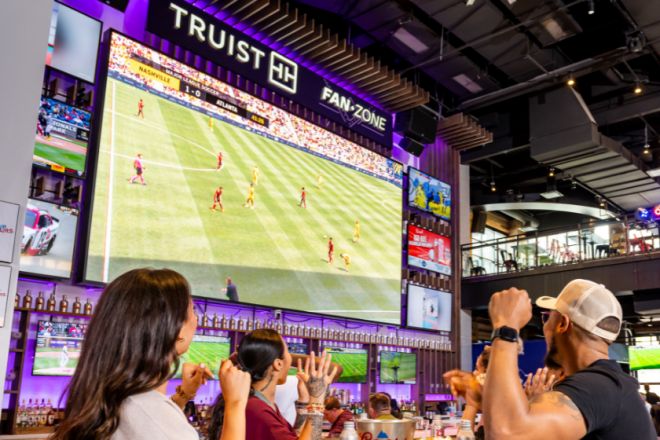
1). Diffusion en direct de des sports événements
Lors des événements sportifs, les écrans LED sont devenus un pont important reliant la scène et le public. Grâce aux écrans LED haute définition et grand format, le public peut regarder l'écran du match en temps réel et ne manquer aucun moment passionnant.
Associés à des commentaires sur place et à des liens interactifs, tels que des mises à jour de score en temps réel, des statistiques sur les données des joueurs, des votes du public, etc., les écrans d'affichage LED offrent une expérience de visionnement plus immersive au public.
De plus, lors d'événements sportifs à grande échelle, les écrans d'affichage LED peuvent également être utilisés pour diffuser annonces, des aperçus d'événements et des informations sur les sponsors, créant ainsi une valeur commerciale supplémentaire pour les organisateurs d'événements.
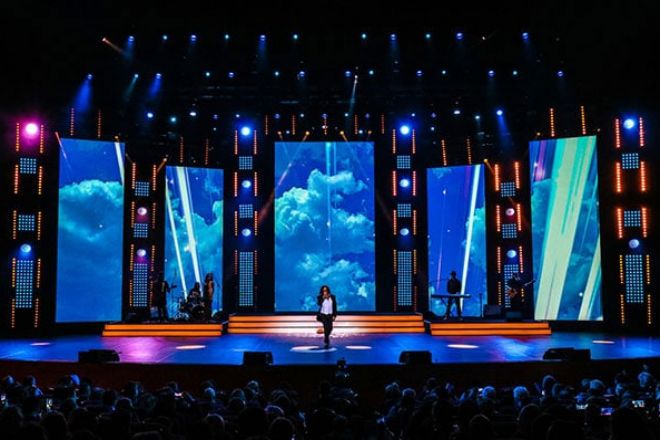
2). Performances artistiques et concerts
Dans les performances artistiques et les concerts, l’application des écrans d’affichage LED a grandement enrichi la organiser effets et expérience du public.
En tant qu'arrière-plan de scène, l'écran LED peut lire des supports vidéo liés au thème de la performance, tels que le ciel étoilé de rêve, la mer de nuages fluide, etc., pour créer un effet visuel unique.
En même temps, il peut également afficher l'écran de performance en temps réel, comme le gros plan du chanteur, la scène de performance du groupe, etc., afin que le public semble être dans la performance.
De plus, l'écran LED peut également coopérer avec les équipements de scène, tels que l'éclairage et le son, pour obtenir un effet de scène plus excitant et améliorer l'attrait artistique et la visualisation de la performance.
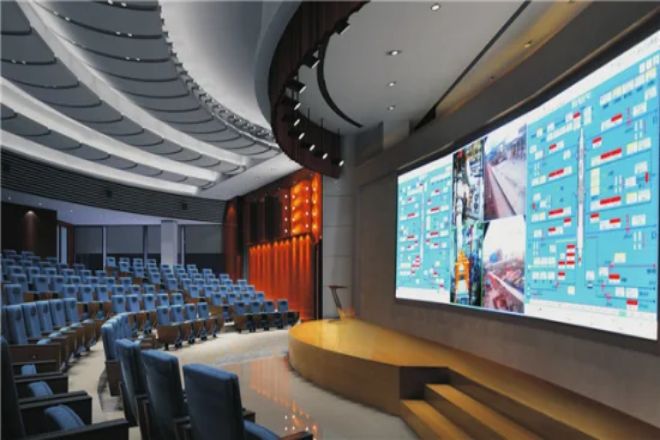
3). En ligne éducation et formation
Dans les établissements d’enseignement et la formation en entreprise, l’application des écrans d’affichage LED a apporté des changements révolutionnaires à l’enseignement et à l’apprentissage.
En diffusant des cours ou des conférences en direct, les écrans LED permettent l'enseignement à distance, brisant ainsi les contraintes de temps et d'espace. Les étudiants ou les employés peuvent suivre des cours en direct via Internet depuis n'importe quel endroit et interagir avec les professeurs en temps réel.
Dans le même temps, la haute définition et le grand écran de l'écran d'affichage LED rendent le contenu pédagogique plus intuitif et facile à comprendre, améliorant ainsi l'effet pédagogique et l'expérience d'apprentissage.
De plus, l'écran d'affichage LED peut également être utilisé pour lire des vidéos pédagogiques, des présentations PPT et d'autres supports pédagogiques auxiliaires pour enrichir les méthodes et le contenu de l'enseignement.
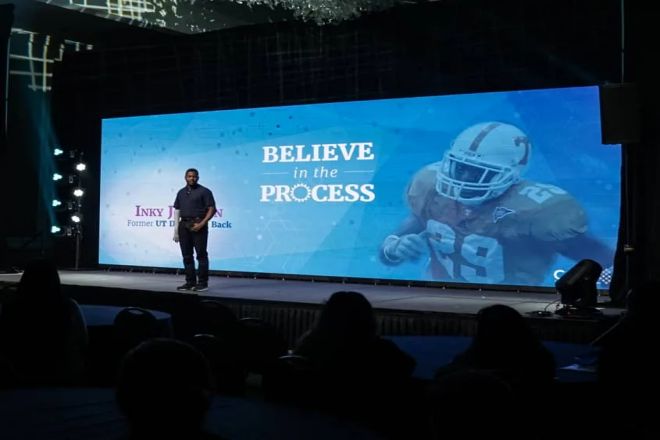
4). Activités commerciales et des expositions
Dans diverses activités commerciales et expositions, les écrans d’affichage LED sont devenus un outil important pour attirer l’attention du public et améliorer l’image de marque.
En diffusant des vidéos promotionnelles de marque, des présentations de produits et des diffusions en direct, les écrans LED peuvent rapidement attirer l'attention du public et transmettre l'image de marque et les informations sur les produits de l'entreprise. En particulier lors de grandes expositions, la flexibilité et la personnalisation des écrans LED permettent aux entreprises d'afficher et de promouvoir en fonction de leurs propres besoins.
Dans le même temps, les écrans LED peuvent également interagir avec le public, par exemple en scannant des codes à suivre, en participant à des tirages au sort et en participant à d'autres activités pour améliorer le sentiment de participation et d'expérience du public.
Conclusion
En résumé, les écrans LED ont joué un rôle important dans le visionnage de contenu diffusé en direct grâce à leurs avantages uniques, apportant non seulement un festin visuel sans précédent au public, mais améliorant également considérablement l'immersion et l'interactivité du visionnage.
Grâce à une sélection et une configuration raisonnables, en optimisant la qualité du contenu et en améliorant l'interactivité, nous pouvons exploiter davantage le potentiel des écrans LED et créer une expérience de visionnage plus excitante et plus confortable pour le public.
Enfin, si vous souhaitez en savoir plus sur les écrans LED, veuillez nous contacter.
